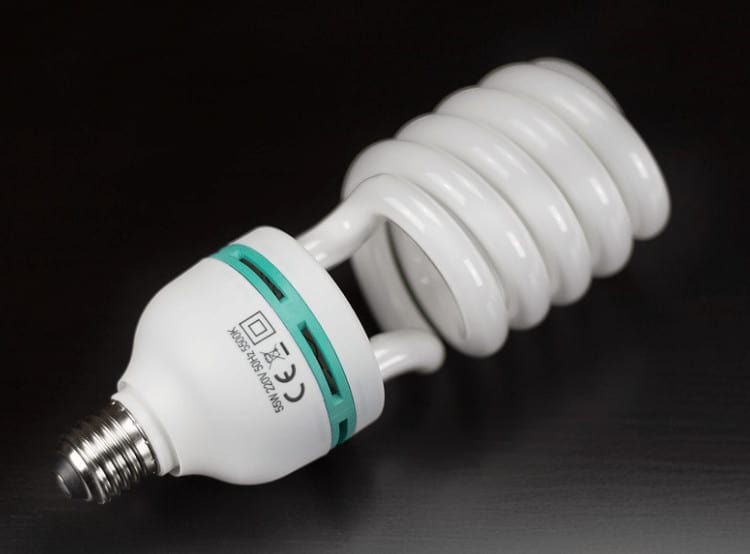
Compact fluorescent bulbs or CFL bulbs are becoming more popular in homes in order to reduce energy resources and save on electric bills. Many consumers are concerned about the mercury content in these bulbs and have questions.
HOW MUCH MERCURY IS IN A CFL BULB?
CFL bulbs contain a very small amount (4-6 mg) of elemental mercury inside the glass tubing. As a comparison, an oral thermometer can contain about 500 mg of elemental mercury.
DOES MERCURY IN A CFL BULB PUT ME AT RISK?
When bulbs remain intact there is not a risk of being exposed to mercury. On the other hand, if a bulb or other mercury containing product breaks, the risk of being exposed is by possibly inhaling vapors in the air.
Exposure to the skin from brief handling is considered non-toxic because elemental mercury is poorly absorbed through the skin.
WHY SHOULD I BE CONCERNED ABOUT MERCURY?
Given improper cleanup or long term exposure the symptoms of mercury poisoning are: shortness of breath, nausea, vomiting, metallic taste, and headache.
HOW DO I PREVENT BREAKAGE OF CFL BULBS?
- Only handle bulbs after they have been cooled.
- Do not over tighten bulbs, screw in only until snug.
- Use CFL bulbs with glass or plastic covers over the spiral tube, they are more durable.
- Consider using a disposable cloth or towel under the bulb when changing it so if it breaks, it can be easily managed.
HOW SHOULD I CLEAN UP A BROKEN CFL BULB?
- Open a window or door to ventilate the room and if practical turn off the heating/cooling system.
- Do not vacuum or use a broom as it may spread the powder or vapor.
- For hard surfaces use stiff cardboard to scoop up broken pieces and use a sticky tape such as duct tape to pick up any remaining glass or powder. Using a flashlight may help to visualize the tiny beads of mercury.
- Wet wipes or wet paper towels can be used to clean hard surfaces and can then be discarded.
- Place all contaminated items in a plastic trash bag, seal with duct tape and place in the outdoor trash or bring to a disposal site in your area.
- Wash skin well with soap and water after cleanup.
- If a spill involves a large volume of mercury or a large surface area, consider using a professional cleaning company who is licensed in environmental mercury cleanup.
- You may also access these clean-up guidelines online at: www.epa.gov/cfl/cleaning-broken-cfl
